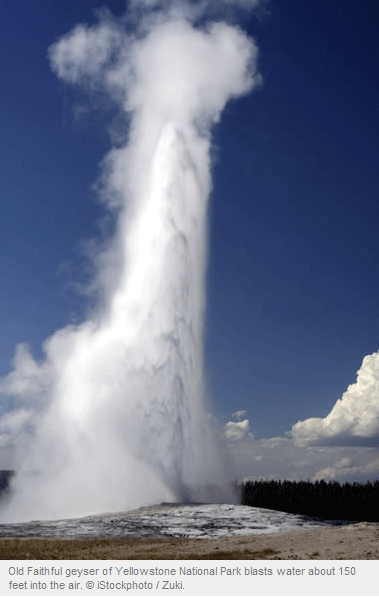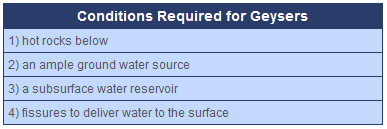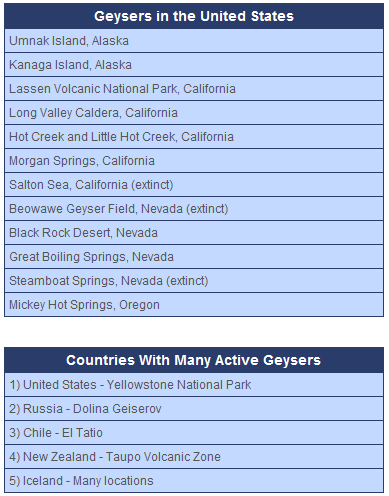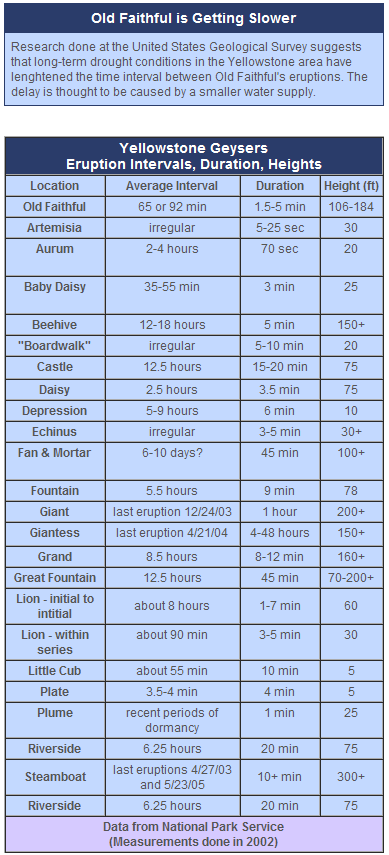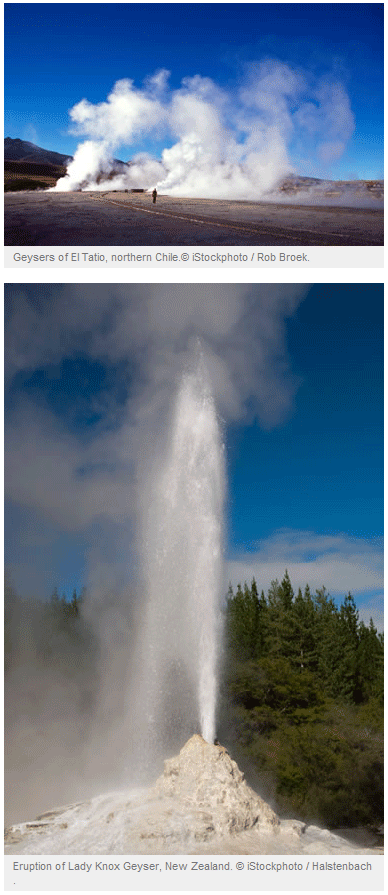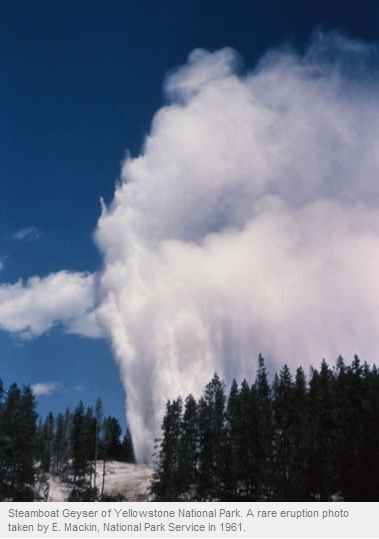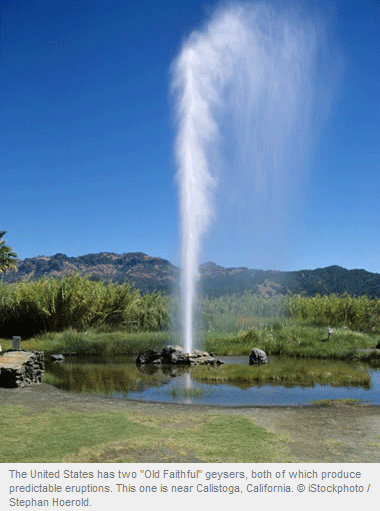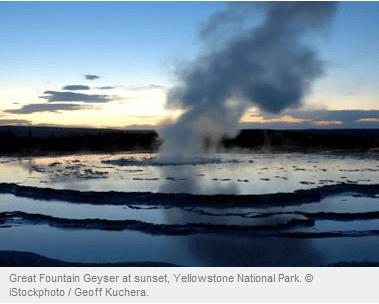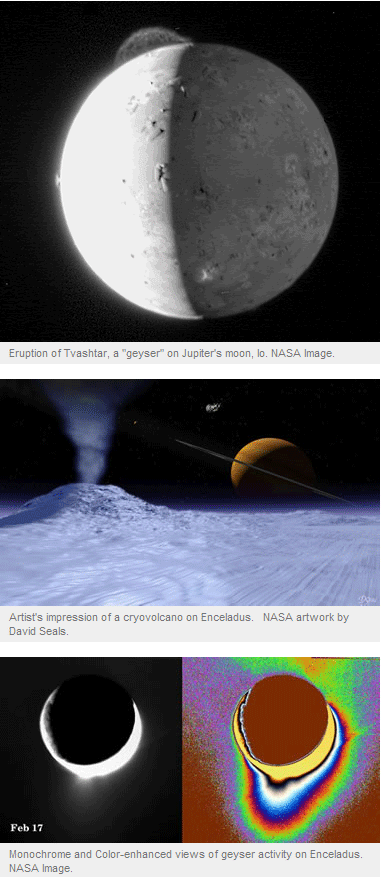A geyser is a vent in Earth’s surface that periodically ejects a column of hot water and steam. Even a small geyser is an amazing phenomenon; however some geysers have eruptions that blast thousands of gallons of boiling hot water up to a few hundred feet in the air.
Old Faithful is the world’s best known geyser. It is located in Yellowstone National Park (USA). Old Faithful erupts every 60 to 90 minutes and blasts a few thousand gallons of boiling hot water between 100 and 200 feet into the air.
Conditions Required for a Geyser
Geysers are extremely rare features. They occur only where there is a coincidence of unusual conditions. Worldwide there are only about 1000 geysers and most of those are located in Yellowstone National Park (USA).
Where are Geysers Found?
Most of the world’s geysers occur in just five countries: 1) the United States, 2) Russia, 3) Chile, 4) New Zealand and 5) Iceland. All of these locations are where there is geologically recent volcanic activity and a source of hot rock below.
How Often Do Geysers Erupt?
Most geysers erupt irregularly and infrequently. However, a few are known for regular eruptions. The most famous, named “Old Faithful” in recognition of its regular eruptions, is located in Yellowstone National Park (USA) and erupts about every 60 to 90 minutes. More details on the eruption intervals of Yellowstone geysers is given in the table below.
How Often Do Geysers Erupt?
Most geysers erupt irregularly and infrequently. However, a few are known for regular eruptions. The most famous, named “Old Faithful” in recognition of its regular eruptions, is located in Yellowstone National Park (USA) and erupts about every 60 to 90 minutes. More details on the eruption intervals of Yellowstone geysers is given in the table below.
How Do Geysers Work?
To understand how a geyser works, you must first understand the relationship between water and steam. Steam is a gaseous form of water. Steam is produced when water is heated to its boiling point. When water converts into steam at surface conditions it undergoes an enormous expansion because steam occupies 1600 times as much space as the original volume of original water. The eruption of a geyser is powered by a “steam explosion” when boiling hot water suddenly expands into the much more voluminous steam.
To summarize: a geyser erupts when superheated ground water, confined at depth, becomes hot enough to blast its way to the surface.
Here’s what happens in the ground…
Cool ground water near the surface percolates down into the earth. As it approaches a heat source below, such as a hot magma chamber, it is steadily heated towards its boiling point. However, at the boiling point the water does not convert into steam. This is because it is deep below the ground and the weight of cooler water above produces a high confining pressure. This condition is know as “superheated” – the water is hot enough to become steam – it wants to become steam – but it unable to expand because of the high confining pressure.
At some point the deep water becomes hot enough, or the confining pressure is reduced, and the frustrated water explodes into steam in an enormous expansion of volume. This “steam explosion” blasts the confining water out of the vent as a geyser.
Are There Geysers on Other Planets?
So far, geysers have not been discovered on other planets, however, geyser-like activity has been documented on some of the moons in our solar system. Jupiter’s moon, Io, has eruptions of frozen water particles and other gases through vents in its surface. Triton, a moon of Neptune, and Enceladus, a moon of Saturn, also have these cold geysers sometimes called “cryovolcanoes”. They are thought to erupt from pools of liquid water located a short distance below the the surface of these moons. On the surface the eruptions are like a “volcanic snow”.
Contributor: Hobart King
Source: http://geology.com/
Dear User/Visitor! Please, answer on our questions: tick off one of the positions – your answer will make us able to improve our site and make it more interesting and useful!

